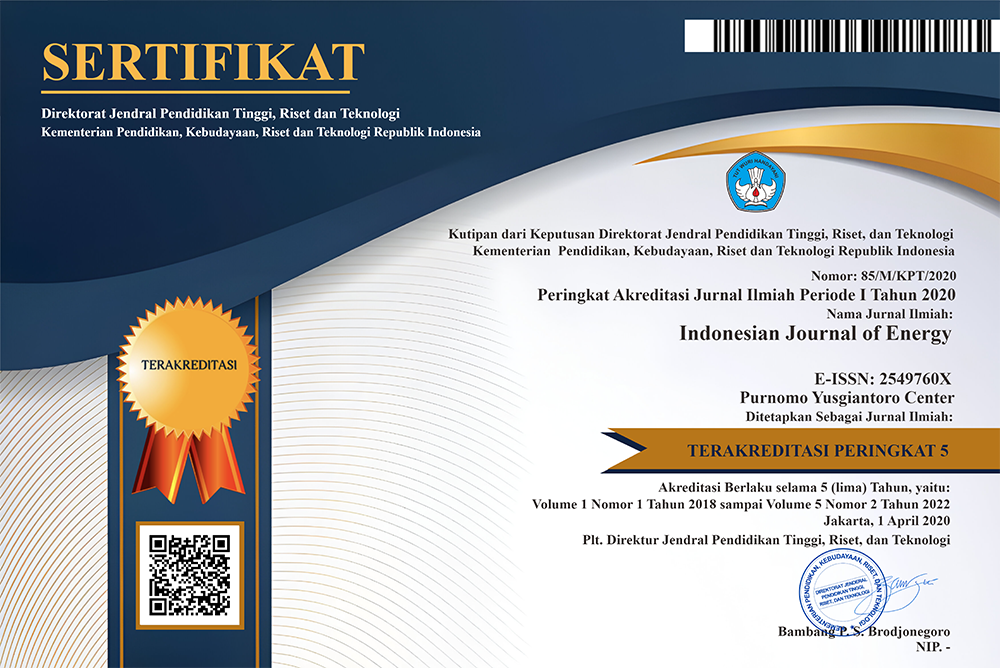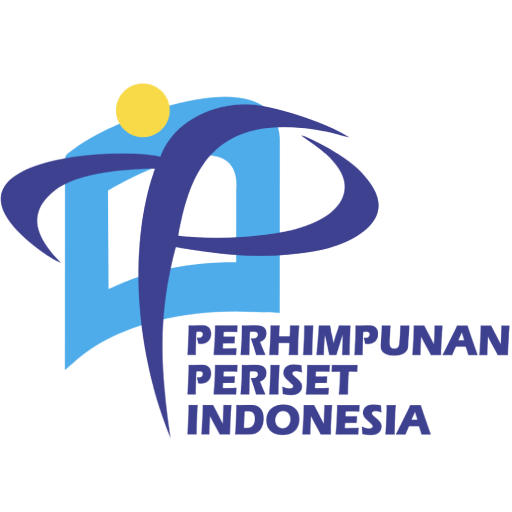The Potential of Sukadana Basalt Province as a New Geothermal Resources in The Back Arc of Sumatra
A New Insight from Petrology and Geochemistry
Abstract
Geothermal resources are currently obtained from areas within volcanic arcs, such as the Pertamina Ulu Belu and Supreme Energy Rajabasa Geothermal Fields. However, this understanding may change in the future, as the Quaternary Sukadana Basalt Province (SBP), located in the back arc, is believed to have potential as a future geothermal energy resource. This research aims to explore the various factors that contribute to the high heat flow in the SBP region and generate a new perspective on geothermal energy particularly in the Lampung province. The methods used integrate previous research findings, such as heat flow data, regional tectonics, and geological structures, with new petrography-whole rock geochemistry. The whole rock geochemistry was determined using X-Ray Fluorescence (XRF), Inductively Coupled Plasma-Optical Emission Spectrometry (ICP-OES), and Inductively Coupled Plasma-Mass Spectrometry (ICP-MS). The SBP was formed by the Paleogene northwest-southeast striking fault and influenced by the Quaternary northeast-southwest striking fault, which may serve as conduits for hydrothermal fluid in addition to their vesicular structures. Geochemical analysis suggests the presence of both mantle plume and subduction-related processes. The magmatism linked to subduction-plume tectonic mechanisms and the thinning of the crust due to pull-apart motion caused by the movement of two large faults (Sumatra Fault Zone and Bangka Shear) can increase regional heat flow to 100±10 mW/m2. As a result, the SBP has significant potential as a source of geothermal energy for electricity generation in the future.
Downloads
References
Abdurrachman, M., Widiyantoro, S., Priadi, B., & Ismail, T. (2018). Geochemistry and structure of krakatoa volcano in the Sunda Strait, Indonesia. Geosciences (Switzerland), 8(4), 1–10. https://doi.org/10.3390/geosciences8040111
Artemieva, I., & Mooney, W. D. (2001). Thermal thickness and evolution of Precambrian lithosphere: A global study. Journal Gephysical Research, 106(16), 387–414.
Bora, D. K., Borah, K., & Goyal, A. (2016). Crustal shear-wave velocity structure beneath Sumatra from receiver function modeling. Journal of Asian Earth Sciences, 121, 127–138. https://doi.org/10.1016/j.jseaes.2016.03.007
Coffin, M., & Eldholm, O. (1994). Large igneous provinces: Crustal structure, dimensions, and external consequences. Revs. Geophys, 32, 1–36.
Curie, C. A., & Hyndman, R. D. (2006). The thermal structure of subduction zone back arcs. Journal of Geophysical Research: Solid Earth, 111(8), 1–22. https://doi.org/10.1029/2005JB004024
Fossen, H. (2010). Structural geology. Cambridge University Press.
Früh-green, G. L., Kelley, D. S., Lilley, M. D., Cannat, M., Chavagnac, V., & Baross, J. A. (2022). Diversity of magmatism , hydrothermal processes and microbial interactions at mid-ocean ridges. Nature Reviews Earth & Environment. https://doi.org/10.1038/s43017-022-00364-y
Garnero, E. J., Thorne, M. S., McNamara, A., & Rost, S. (2007). Superplumes: Beyond plate tectonics. In Superplumes: Beyond plate tectonics.
Gasparon, M. (1993). Origin and evolution of mafic volcanics of Sumatra (Indonesia): Their mantle sources, and the roles of subducted oceanic sediments and crustal contamination. University of Tasmania.
Girard, G., & van Wyk de Vries, B. (2005). The Managua Graben and Las Sierras-Masaya volcanic complex (Nicaragua); pull-apart localization by an intrusive complex: Results from analogue modeling. Journal of Volcanology and Geothermal Research, 144(1–4), 37–57. https://doi.org/10.1016/j.jvolgeores.2004.11.016
Hall, R., & Morley, C. K. (2004). Sundaland basins. In Geophysical monograph series (Vol. 149, pp. 55–85). American Geophysical Union. https://doi.org/10.1029/149GM04
Hall, R., & Spakman, W. (2015). Mantle structure and tectonic history of SE Asia. Tectonophysics, 658, 14–45. https://doi.org/10.1016/j.tecto.2015.07.003
Harjono, H., Diament, M., Dubois, J., Larue, M., & Zen, M. T. (1991). Seismicity of the Sunda Strait: Evidence for crustal extension and volcanological implications. Tectonics, 10(1), 17–30. https://doi.org/10.1029/90TC00285
Hasibuan, R. F., Ohba, T., Abdurrachman, M., & Hoshide, T. (2020). Temporal variations of petrological characteristics of Tangkil and Rajabasa volcanic rocks, Indonesia. Indonesian Journal on Geoscience, 7(2), 135–159. https://doi.org/10.17014/ijog.7.2.135-159
Hollocher, K., Robinson, P., Walsh, E., & Roberts, D. (2012). Geochemistryof amphibolite-facies volcanics and gabbros of the Støren Nappe inextensions west and southwest of Trondheim, Western Gneiss Region, Norway: A key to correlations and paleotectonic settings. American Journal of Science, 312, 357–416.
Irvine, T. N., & Baragar, W. R. . (1971). A guide to the classification of the common volcanic rocks. Canadian Journal of Earth Sciences, 8(5), 235–458.
Ketchum, K. Y., Heaman, L. M., Bennett, G., & Hughes, D. J. (2013). Age, petrogenesis and tectonic setting of the Thessalon volcanic rocks, Huronian Supergroup, Canada. Precambrian Research, 233, 144–172. https://doi.org/10.1016/j.precamres.2013.04.009
Le Bas, M. J., Maitre, R. W. L., Streckeisen, A., & Zanettin, B. (1986). A chemical classification of volcanic rocks based on the total alkali-silica diagram. Journal of Petrology, 27, 745–750.
Mandeville, C. W., Carey, S., & Sigurdsson, H. (1996). Magma mixing, fractional crystallization and volatile degassing during the 1883 eruption of Krakatau volcano, Indonesia. Journal of Volcanology and Geothermal Research, 74(3–4), 243–274. https://doi.org/10.1016/S0377-0273(96)00060-1
Mangga, S., Amirudin, Suwarti, T., Gafoer, S., & Sidarto. (1993). Peta geologi lembar Tanjung Karang, Sumatera.
Mattei, M., Riggs, N. R., Giordano, G., Guarnieri, L., Cifelli, F., Soriano, C. C., Jicha, B., Jasim, A., Marchionni, S., Franciosi, L., Tommasini, S., Porreca, M., & Conticelli, S. (2014). Geochronology, Geochemistry and Geodynamics of the Cabo de Gata volcanic zone, Southeastern Spain. Italian Journal of Geosciences, 133(3), 341–361. https://doi.org/10.3301/IJG.2014.44
Muksin, U., Haberland, C., Nukman, M., Bauer, K., & Weber, M. (2014). Detailed fault structure of the Tarutung Pull-Apart Basin in Sumatra, Indonesia, derived from local earthquake data. Journal of Asian Earth Sciences, 96, 123–131. https://doi.org/10.1016/j.jseaes.2014.09.009
Nishimura, S., Nishida, J., Yokoyama, T., & Hehuwat, F. (1986). Neo-tectonics of the Strait of Sunda, Indonesia. Journal of Southeast Asian Earth Sciences, 1(2), 81–91. https://doi.org/10.1016/0743-9547(86)90023-1
Nukman, M., & Moeck, I. (2013). Structural controls on a geothermal system in the Tarutung Basin, North Central Sumatra. Journal of Asian Earth Sciences, 74, 86–96. https://doi.org/10.1016/j.jseaes.2013.06.012
Panjaitan, S. (2015). Mengetahui struktur patahan penyebab gempa di Pulau Yapen dan sekitarnya dengan metode gayaberat daerah Papua. Jurnal Lingkungan Dan Bencana Geologi, 6(1), 19–30.
Pramumijoyo, S., & Sebrier, M. (1991). Neogene and quaternary fault kinematics around the Sunda Strait area, Indonesia. Journal of Southeast Asian Earth Sciences, 6(2), 137–145. https://doi.org/10.1016/0743-9547(91)90106-8
Ringwood, A. (1990). Petrogenesis of intraplate magmas and structure of the upper mantle. Chemical Geology, 82, 187–207.
Rybach, L. (2019). Geothermal potential of Sedimentary Basins, especially of the Swiss Molasse Basin. Földtani Közlöny, 149(4), 401. https://doi.org/10.23928/foldt.kozl.2019.149.4.401
Safonova, I., Kojima, S., Nakae, S., Romer, R. L., Seltmann, R., Sano, H., & Onoue, T. (2015). Oceanic island basalts in accretionary complexes of SW Japan: Tectonic and petrogenetic implications. Journal of Asian Earth Sciences, 113, 508–523. https://doi.org/10.1016/j.jseaes.2014.09.015
Schütz, F., Winterleitner, G., & Huenges, E. (2018). Geothermal exploration in a sedimentary basin: new continuous temperature data and physical rock properties from northern Oman. Geothermal Energy, 6(1), 5. https://doi.org/10.1186/s40517-018-0091-6
Soeria-Atmaja, R., Maury, R., Bougault, H., Joron, J., Bellon, H., & Hasanunddin, D. (1986). Présence de tholeiites d’arrière- arc Quatenariés en Indonésie: Les basaltes de Sukadana (Sud de Sumatra). Réunion Des Sciences de La Terre.
Sribudiyani., Nanang, M., Ryacudu, R., Kunto, T., Astono, P., Prasetya, I., Sapiie, B., Asikin, S., Harsolumakso, A. H., & Yulianto, I. (2003). The collision of the East Java microplate and its implication for hydrocarbon occurrences in the East Java Basin. Proc. Indon Petrol. Assoc., 29th Ann. Conv. https://doi.org/10.29118/IPA.1530.03.G.085
Sun, S. S., & McDonough, W. F. (1989). Chemical and isotopic systematics of oceanic basalts: Implications for mantle composition and processes. Geological Society Special Publication, 42(1), 313–345. https://doi.org/10.1144/GSL.SP.1989.042.01.19
Susilohadi, S., Gaedicke, C., & Djajadihardja, Y. (2009). Structures and sedimentary deposition in the Sunda Strait, Indonesia. Tectonophysics, 467(1–4), 55–71. https://doi.org/10.1016/j.tecto.2008.12.015
Winter, J. D. (2009). Principles of igneous and metamorphic petrology (2nd ed.). Cambridge University Press.
Yamanlar, S., Korkmaz, E. D., & Serpen, U. (2020). Assessment of geothermal power potential in Buyuk Menderes Basin, Turkey. Geothermics, 88(July 2019), 101912. https://doi.org/10.1016/j.geothermics.2020.101912
Yilmaz, Y. (2002). Tectonic evolution of western Anatolian extensional province during the neogene and quaternary. GSA Denver Annual Meeting.
Zheng, Y., Mao, J., Chen, Y., Sun, W., Ni, P., & Yang, X. (2019). Hydrothermal ore deposits in collisional orogens. Science Bulletin, 64(3), 205–212. https://doi.org/10.1016/j.scib.2019.01.007
















